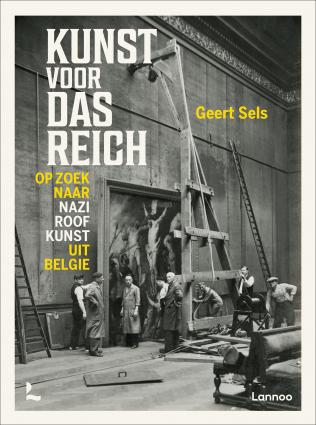Kunst voor das Reich.
Op zoek naar naziroofkunst uit België.

While the Second World War wreaked death and destruction, a gigantic drain of artworks took place almost unnoticed. From the occupied areas the Nazis carried off artworks to Germany in order to build up ambitious art collections. This also happened in Belgium.
Journalist at the Standaard newspaper and associated researcher at Cegesoma, Geert Sels has been investigating for a long time through which trafficking routes major paintings by Memling, Van der Weyden, Jordaens and Cranach have left our country. He put together the pieces of the puzzle that he found in archives in Paris, The Hague, Koblenz and in many Belgian archives too.
The book ‘Kunst voor das Reich’ (“Art for the Reich”) is about Nazi-looted art from Belgium, but from an international perspective. It starts with the coming into power of Adolf Hitler, after which the anti-Jewish policies brought a ‘procession of fear and hope’ to Belgium. Already at this time, the first problematic art transactions took place. Immediately after occupying Belgium, the Nazis began to satisfy their hunger for art. Under the pretence of a pseudo-legal framework, artworks were looted from repositories, transport companies and private homes. Art was also bought for Millions of Reichsmark. Private art collectors, art dealers and big auction houses willingly joined in the Nazi-programme. The art market was in full swing like never before.
After the war, Belgium had a meagre artwork recovery. Nevertheless, some paintings came back to the country. Most major Belgian museums today hold artworks that at one time or another ended up in Nazi-Germany. Many outstanding paintings we admire today have a dark history and were once among the collections of Hitler and Göring. Their provenance has not been fully elucidated. After the publication of ‘Kunst voor das Reich’, a series of parliamentary questions were brought to the floor. Belgian museums faced claims for restitution of paintings. Which are these paintings exactly? And why are they being claimed back?
The key finding of ‘Kunst voor das Reich’ is that Belgium held a unique position during the war. Many artworks were indeed brought to Germany by a detour through the Netherlands or France. This is the reason why many artworks of Belgian origin are still in the hands of our neighbour countries. Where are the paintings by Colijn de Coter and Frans Francken that Hermann Goring bought in Hotel Métropole in Brussels hanging now? Other works of art found their way to big American museums and even to Yekaterinburg in Russia. And the Belgian Memling panel that Hermann Göring carried with him when he was arrested by the Americans, where could this piece have ended up now?
A few press clippings:
- ‘Grensverleggend onderzoek met duidelijke aanbevelingen’ (Faro, December 2022)
- ‘L’enquête de Geert Sels débouche sur la parution d’une véritable somme’ (Le Monde, 27/3/2023)
- ‘Het beste onderzoeksjournalistiek boek van Vlaanderen’ (Doorbraak, 15/4/2023)
- ‘Zijn doortastendheid leverde een standaardwerk op over de praktijken van nazi-Duitsland’ (OKV)
- ‘One man’s bid to trace art gems seized from Jewish owners (The Guardian, 21/5/2023)
- ‘Sels heeft een veelzijdig en gedetailleerd pionierswerk afgeleverd en legt een stevig fundament voor verder onderzoek’ (De Lage Landen, May 2023)